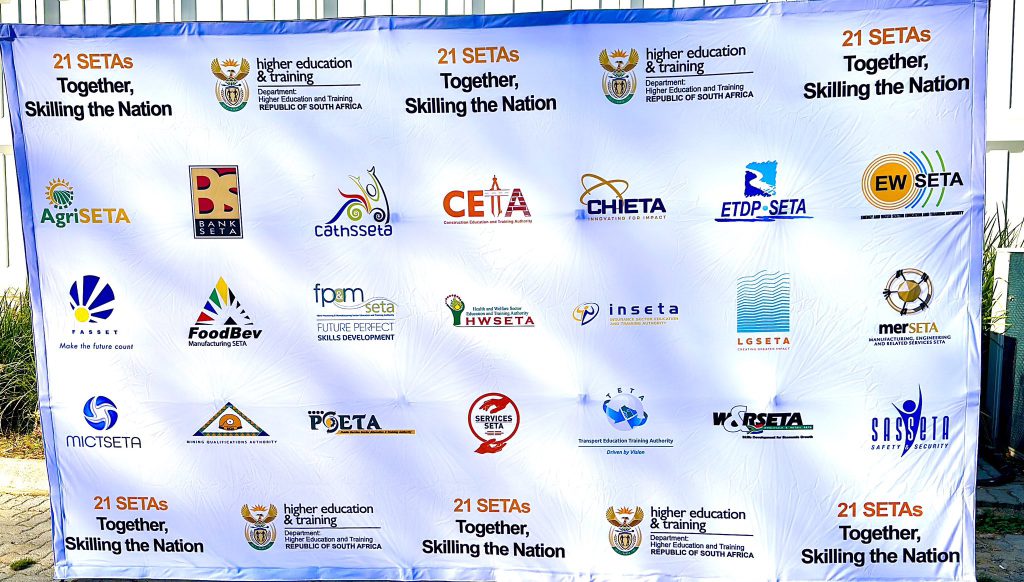The South African workforce is constantly evolving, and keeping your skills relevant is crucial for success. But with so many acronyms and regulations surrounding skills development, it can be confusing to know where to start. This blog cuts through the jargon and explains how SETAs, SDL, and compulsory funding work together to empower South Africans with the skills they need to thrive.

SETAs: The Skill-Building Matchmakers
Imagine a world where employers have access to a pool of highly skilled workers, perfectly suited to their needs. That’s where Sector Education and Training Authorities (SETAs) come in. There are 15 SETAs, each focusing on a specific industry, from Agriculture to Transport. They act as intermediaries, bringing together employers, educational institutions, and the government to ensure training programs align with industry demands.
What do SETAs do?
- Develop relevant skills programs: SETAs work closely with industry experts to design curriculum frameworks and qualifications that equip learners with the most in-demand skills. This ensures graduates enter the workforce with the right skillset to hit the ground running.
- Fund Learnerships and Internships: SETAs understand the power of practical experience. They provide funding for learnerships and internships, allowing young people to gain valuable on-the-job training while earning.
- Promote Workplace Skills Development: SETAs don’t just focus on pre-employment training. They also collaborate with companies to develop ongoing skills development programs for employees. This ensures a continuous cycle of learning and growth throughout one’s career.
- Advocate for Youth Employment: SETAs champion youth employment in South Africa. They lobby government and industry leaders to create policies and initiatives that make it easier for young people to find work. This includes promoting youth entrepreneurship and encouraging businesses to invest in skills development programs.
The Fuel for Skills Development: The Skills Development Levy (SDL)
Think of the Skills Development Levy (SDL) as the engine that drives skills development in South Africa. It’s a mandatory contribution that all employers with a payroll exceeding R500,000 per year must pay to the South African Revenue Service (SARS). The funds collected through SDL are then distributed between the National Skills Fund (NSF) and the SETAs.
How does the SDL benefit you?
- A More Skilled Workforce: By contributing to SDL, you’re directly investing in creating a more skilled workforce, which benefits your business and the economy as a whole. A skilled pool of talent makes it easier to find qualified employees and fosters innovation.
- Tax Rebates: Companies that actively invest in training their employees through SETA-approved programs can qualify for tax rebates on their SDL contributions. This incentivizes businesses to prioritize their employees’ skills development.
Compulsory Funding: A Shared Responsibility
The concept of compulsory funding might seem daunting, but it’s a shared responsibility that benefits everyone. By contributing to SDL, employers play a crucial role in building a skilled and competitive workforce. This translates to a more productive economy and a brighter future for South Africa.
Remember, investing in skills development is an investment in your future and the future of South Africa. By working together, SETAs, employers, and employees can create a skilled workforce that drives economic growth and prosperity.
